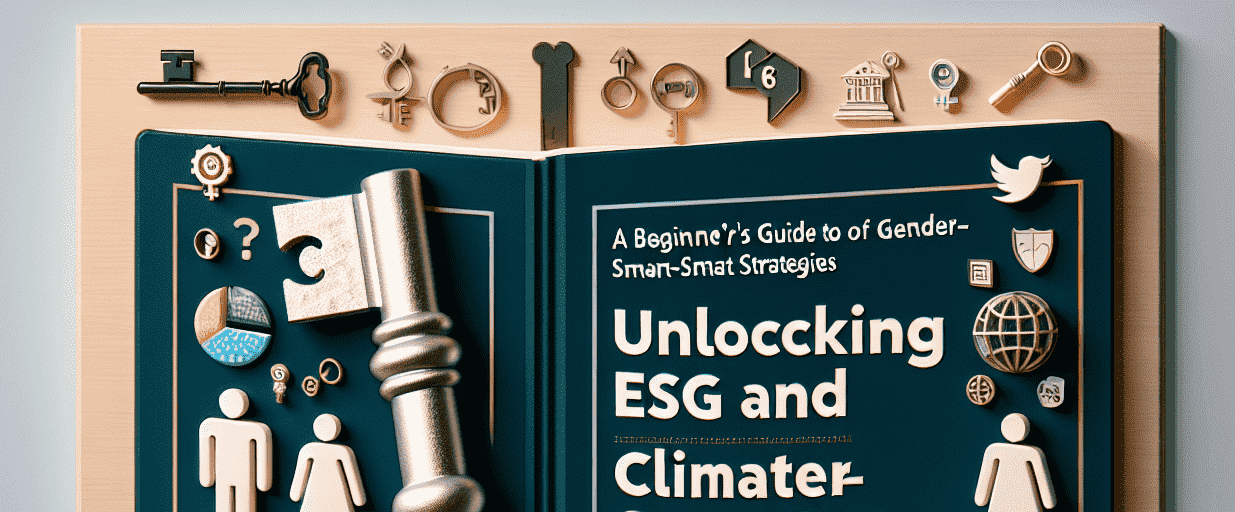
Business Gender Equality: A Deep Dive into Gender Analysis
 Rohan Hall Published on: 2025-02-27T13:26:08.052000
Rohan Hall Published on: 2025-02-27T13:26:08.052000Introduction: Understanding Gender Analysis in Business
Grasping gender analysis in business is a pivotal step in navigating worksites effectively. Different genders influence and are influenced by the business environment, paving the way for global achievements. Business gender equality enhances inclusivity, stimulating creativity and advancement. It ensures equal opportunities for all, enabling diverse perspectives to enhance profitability and consumer engagement.
- Companies prioritizing gender diversity usually observe enhanced decision-making and problem-solving capabilities.
- Diverse teams proficiently connect with wider audiences, extending market reach.
- Equitable workplaces contribute to higher employee satisfaction and retention.
Investing in gender equity not only aligns with corporate morality but unlocks competitive advantages. Industry leaders recognize, "A balance of gender voices paves the way for equitable growth," highlighting the potential for economic expansion. Whether you're an experienced executive or a new entrepreneur, understanding these gender dynamics is vital for fostering a resilient, visionary enterprise.
What is Gender Analysis in Business?
Gender analysis in business examines the different roles, needs, and opportunities experienced by diverse genders within an organization or market. It reviews the effects of gender on workplace dynamics and marketing strategies. By closely evaluating gender-related factors, businesses can make informed decisions and promote gender equality at work. In an era focusing on inclusivity, recognizing gender analysis's significance becomes crucial.
Why is gender analysis so vital? It helps in identifying disparities or imbalances in gender representation and treatment in business settings, which is essential for ensuring Business Gender Equality. Focusing on gender equality not only creates a fair environment but enhances employee satisfaction and performance.
Gender analysis considers several key aspects: participation-who is involved in activities and at what level, access and control over resources like financial opportunities and time, and benefits such as wages and promotions. Ensuring these aspects are equitable across employees encourages a balanced workplace.
Practically, businesses can perform gender analysis by gathering and analyzing gender-related data through employee surveys, focus groups, and HR data evaluation. If analyses reveal a gender pay gap, implementing a fair pay structure could be a solution.
Achieving gender parity in business need not be overly complex. Simple measures like mentorship programs for underrepresented genders and unbiased recruitment processes hold significant positive impacts. Hosting workshops on gender sensitivity and equality fosters a culture valuing diversity and inclusivity.
In conclusion, gender analysis is crucial for Business Gender Equality. It enhances fairness and drives productivity and innovation through diverse viewpoints. By incorporating gender analysis into business routines, companies can nurture a respectful and inclusive environment for all employees.
The Importance of Business Gender Equality
Gender equality in business is beyond just a moral duty; it is a strategic vantage point. Embracing business gender equality opens avenues of diverse ideas and innovations, involving equal male and female representation in powerful, influential positions. Such diversity enhances creativity and decision-making quality. Many studies indicate, "Companies promoting gender balance tend to outperform those that do not."
Businesses safeguarding gender balance enjoy numerous advantages. These include an improved reputation, boosted employee morale, and heightened customer loyalty. Let's delve into how a gender-diverse workplace benefits businesses:
- Improved Innovation: Diverse teams lead to richer perspectives and more inventive solutions.
- Greater Employee Satisfaction: A fair, inclusive environment enhances workplace culture.
- Higher Financial Performance: Gender-equitable companies tend to achieve greater profitability and financial success.
Fostering equality in the workplace broadens skill sets and perspectives. Equitable contributions from both genders enable a wealth of ideas, resulting in improved solutions and products. It's akin to "two heads are better than one."
To benefit from workplace diversity, companies must ensure an inclusive atmosphere. Inclusivity involves welcoming everyone and ensuring integrity in growth opportunities. This sincere approach translates into greater employee engagement and loyalty.
Ultimately, business gender equality is vital for thriving in future landscape. Embracing diversity and inclusivity strengthens workforces and enhances financial outcomes. As businesses forge ahead, prioritizing gender balance aids in innovation and progress, fostering a better world for everyone. A company's gender equality dedication reflects its wider societal commitment.
Steps to Conduct Gender Analysis
Conducting a gender analysis is crucial to promoting Business Gender Equality. It helps businesses comprehend gender dynamics within their workforce, fostering inclusivity. Here are straightforward steps to perform gender analysis that can transform your workplace into an equitable space.
Begin by collecting data on employees' gender demographics. This foundational data is crucial for the analysis. Understand the different genders within your workforce and their roles. To do this:
- Gather data on the gender distribution among employees.
- Analyze the positions and roles their genders occupy.
- Take into consideration age, role, and experience for a comprehensive perspective.
This data grants insight into existing trends and indicates areas needing enhancement.
Next, execute a gender-gap analysis focusing on pay, opportunity, and representation disparities. During this analysis:
- Examine salary data to detect pay discrepancies.
- Evaluate gender representation in leadership roles.
- Review career advancement opportunities for all genders.
Tackling identified gaps progresses your path toward greater gender parity.
Following gap identification, engage stakeholders including employees, management, and possibly external partners. Foster open dialogues around gender dynamics and challenges. You can:
- Organize forums and meetings to discuss findings and solutions.
- Seek employee feedback for improved gender inclusivity.
- Collaborate with external gender equality experts for diverse inputs.
Engaging stakeholders infuses every organizational layer with the transformative process.
After gathering stakeholder input, strategize a strategic plan aimed at enhancing workplace gender equality. Establish clear objectives and action steps, and delegate responsibilities. In developing your plan:
- Ensure it aligns with your overall business goals.
- Set measurable targets for progress tracking.
- Consider both short-term and long-term initiatives.
A well-structured plan directs your business toward a clearer inclusivity trajectory.
Finally, monitor progress continuously. Constant assessment clarifies the effectiveness of your measures, prompting necessary adjustments to further Business Gender Equality. Remember these step-pointers:
- Regularly review data to ensure sustained improvement.
- Alter strategies grounded on feedback and outcomes.
- Celebrate achievements to maintain momentum and morale.
By committing to these steps, you can foster an inclusive workplace that benefits all.
Challenges in Achieving Gender Equality
Reaching gender equality in workplaces remains challenging. Despite progress, attaining gender parity still poses major hurdles. Various structural and cultural factors within businesses inhibit equality advancement. Understanding these obstacles is essential in working towards more inclusive workspaces.
Addressing gender pay gaps presents a major challenge. It highlights earning differences between men and women in identical roles. Often earning less, women encounter significant barriers to equality. Some businesses now conduct pay audits to ensure fair pay structures.
Gender segregation within job roles is another obstacle. Underrepresentation of women in leadership and technical roles hampers career advancement. Companies striving for Business Gender Equality must invest in training and development to empower women to undertake traditionally male-dominated roles.
Cultural stereotypes also hinder progress. They influence hiring practices and everyday work environments. Fostering a culture of inclusion involves educating employees about biases and promoting diverse perspectives. This understanding helps companies embrace their bias and adopt fairness in their business operations.
Balancing work and family responsibilities remains a formidable barrier for many women, often primary caregivers. Offering flexible work arrangements and robust parental leave policies helps employees manage professional and personal lives seamlessly, thus supporting gender equality.
Lastly, a lack of awareness and commitment from leadership can stifle progress toward Business Gender Equality. Executive and managerial commitment is vital for advancing gender equality goals. Leading by example and prioritizing gender equality reflects positively in business operations.
Tools for Business Gender Equality
Achieving Business Gender Equality is vital for thriving, inclusive workplaces. Many businesses strive for fairness regardless of gender, utilizing various tools and resources supporting equality journeys. These encompass frameworks and technologies enhancing awareness, promoting equitable practices, and cultivating inclusive cultures. Recognizing and applying these resources marks a pivotal first step toward parity within workplaces.
Gender gap analysis tools benefit companies attempting to uncover disparities in hiring, salary, and promotions across genders. Businesses using these tools can identify improvement areas, prompted by detailed reports and actionable insights. Deploy tools offering regular assessment for ongoing progress and adaptation.
Leveraging training resources further promotes gender equality. Online platforms provide courses on unconscious bias awareness and equitable treatment, helping individuals address preconceived notions to create balanced environments. Engaged resource utilization encourages awareness, fostering a workplace where everyone is appreciated.
Instituting diversity and inclusion policies is equally crucial. Companies written guidelines emphasizing inclusivity articulate cornerstone values explicitly. Valuable online templates ease policy documentation, alongside ensuring regular updates reflecting dynamic workplace environments.
Forming a gender equality committee can significantly champion inclusivity. Representing diverse perspectives, such committees often comprise members from varied departments. They organize events, discussions, and organize trainings focusing on gender parity. Employee engagement in these efforts promotes a collaborative stride toward more balanced work settings.
Regular progress measurement stands vital. Metrics and analytics ascertain effort effectiveness towards equality goals. Recruiting, retention, and engagement data tracking spotlight successful strategies or areas needing modification. Specified goals guide team reviews, fostering accountability and commitment. Business Gender Equality enriches workplaces, enhancing overall performance and morale favorably.
Success Stories of Gender Equality in Business
Achieving gender equality in business aligns with smarter business maneuvers and moral imperatives. Numerous companies have attained remarkable success in offering equal opportunities and pay for everyone. These success stories illustrate potent examples of accomplishments borne from equality-driven commitments. Learning from such stories inspires similar initiatives, fostering more inclusive, impartial workplaces.
A leader in gender balancing is IKEA. Promoting workforce gender balance, IKEA implements inclusive policies ensuring equal growth chances. Flexible work options enhance employees' work-life balance efficaciously, testament to their success.
Unilever, too, reduced the gender pay gap and fervently endorses diversity. Inclusive leadership tactics inspire women to assume leadership roles. Their environment thrives on measurable goal-setting and accountability.
Starbucks strategically promotes senior roles for women and provides mentorship and training. Cultivating a trust-driven culture affirms an inclusive environment. Their unwavering support for parental leave policies signifies equitable support to all employees.
Equally noteworthy is Patagonia, an environmentally conscious brand. Their support extends to providing on-site childcare and flexible schedules, championing an equitable ambiance for thriving employees.
These narratives illustrate the significance of business gender equality. Companies like IKEA, Unilever, Starbucks, and Patagonia manifest stronger teams and invigorated innovation. Widespread embracement of such practices initiates vast transformation, sculpting equitable societies alongside unparalleled workspaces. Embraced diversity unlocks unexplored growth opportunities.
Conclusion
Understanding Gender Analysis in Business unlocks abundant opportunities for organizations, enhancing their culture through insights-gathered applications of Business Gender Equality.
Some key advantages encompass:
- Inclusive Decision-Making: Diverse teams succeed through multifaceted perspectives.
- Improved Employee Satisfaction: Gender equality uplifts morale and engagement.
- Wider Market Reach: Appreciating gender-related preferences attracts broader audiences.
- Enhanced Reputation: Companies championing gender equality earn favorable perceptions.
Embarking on the 'gender gap analysis', identifying condition disparities affecting genders differently within organizations sparks more equitable landscapes. Bridging these improves overall fairness, ushering meaningful change through diligent efforts towards Business Gender Equality.


